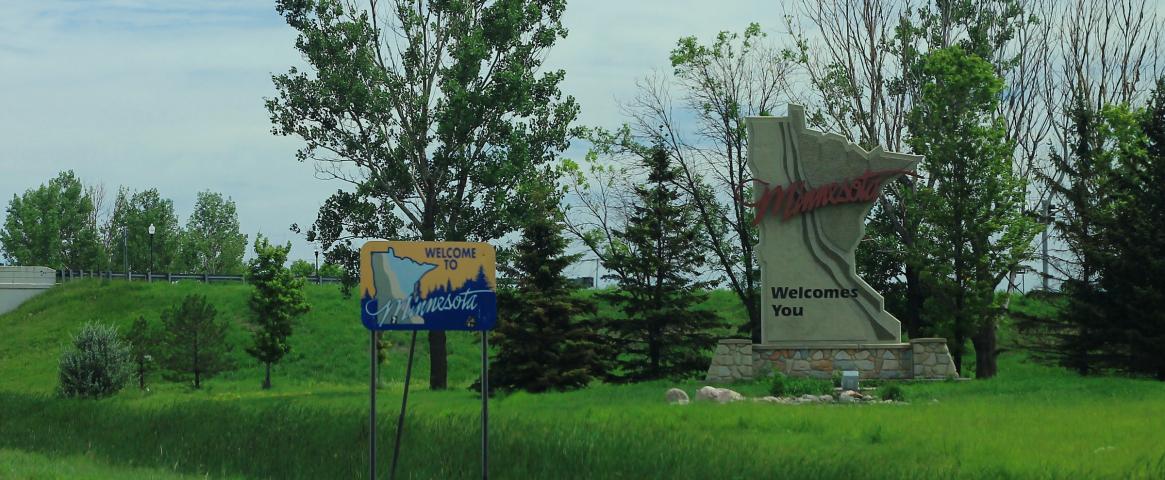By Mari Gades
The road salt that makes highways drivable in winter may threaten monarch caterpillars months later as they feast on milkweed leaves alongside these roads, a new study has found.
Researchers from the University of Minnesota found elevated levels of sodium (salt) in soil, milkweed leaves, and monarch caterpillars along Minnesota roadways in July, long after winter was over.
“Some plants on very high traffic roads, especially those close to the road edge, may be toxic to caterpillars” and decrease monarch survival, according to the study published recently in the journal Science of the Total Environment.
Sodium levels were higher in habitat closer to the road and along busier roads.
“You would think [salt] might flush out by [July] but it’s still there and it’s still affecting these animals that much later in the season,” said Timothy Mitchell, co-author of the study and a postdoctoral researcher in ecology, evolution and behavior at the University of Minnesota.
Roadside habitats may be important for monarch conservation. Along the approximately 4 million miles of public roads in the United States lies an opportunity to plant milkweed—the monarch’s food source, Mitchell said.
However, roadsides come with many dangers. According to the Minnesota Department of Transportation (MnDOT), in the winter of 2018-2019 alone Minnesota used approximately 246,000 tons of salt and 4.6 million gallons of salt brine. Salt, it turns out, attracts insects like monarchs who seek out sodium for their diets.
“The concern would be [that] a female butterfly knows that sodium is a good thing because it is traditionally quite limited, and so she is attracted to ditches. But maybe these plants are so high in sodium that they are toxic,” Mitchell said.
In the summer of 2017, Emilie Snell-Rood, an associate professor of ecology, evolution and behavior at the University of Minnesota, led a team of scientists that selected 43 paved roadside sites in Minnesota containing common milkweed. They resampled 9 of the original sites in the summer of 2018.
Roads hosted 100 to 37,000 vehicles per day, and were along both natural (woods, wetlands, and grasslands) and human modified (agricultural, residential, and industrial) areas.
The researchers collected soil, milkweed leaves, and monarch caterpillars 0 to 18 meters from the pavement. Samples were tested for sodium, nitrogen, phosphorus, zinc, nickel, copper, cadmium, and lead.
Analyses showed elevated levels of sodium in the soil, especially for samples taken closer to the road or along busier roads. For every meter further from the road’s edge, sodium content of soil decreased 9.1 parts per million.
For every additional 1,000 vehicles on the road per day, sodium content increased 6.4 parts per million.
This pattern was also found in milkweed leaves, with 12.9 parts per million decreases per meter further from the road and 20.2 parts per million increases per additional 1,000 vehicles per day on the roadway. Sodium was more elevated in the 2018 milkweed samples, following a particularly snowy Minnesota winter.
Saltier leaves translated to higher sodium content in monarch caterpillar bodies.

No other measured roadside pollutants threatened caterpillars, results showed.
According to a 2014 study from the Snell-Rood lab, milkweed leaf sodium content more than about 2,000 parts per million is associated with an 18% reduction in monarch survival. Around 1% of the 2017 samples in this study exceeded this limit.
While this suggests only a small number of potentially toxic areas, the recent study notes that samples were mostly taken from “lower traffic rural areas, more representative of the ‘average’ road conditions in the state.”
“If roadside managers wish to restore higher traffic urban roads or freeways (e.g. 100,000 cars/day), our results suggest that salt and metals are likely to be elevated, likely with a greater proportion reaching toxic levels,” the study stated.
State transportation departments have been following roadside conservation research. Christopher Smith, a wildlife ecologist at the MnDOT Office of Environmental Stewardship, said, “we try to adapt our management strategies based on the best available information we have.”
Current focuses for decreasing salt on roads at MnDOT, according to Smith, are increasing de-icing efficiency and preventing icing of roads. This is done though more precise salt/brine application, cutting tall trees close to roads to allow more sun on the roads, and creating snow fences along roads. “Every little bit that people are doing is helpful,” Mitchell said.
Mari Gades is a PhD student and researcher at the University of Minnesota in Cognitive and Brain Sciences. She volunteers for science communication and engagement efforts such as Skype a Scientist, Brain Awareness Week, and local museum events. She has a science blog called PhTeatime. Follow her on Twitter @PhTeatimeBlog or email her at marigades@gmail.com.
This story was produced as part of NASW's David Perlman Summer Mentoring Program, which was launched in 2020 by our Education Committee. Gades was mentored by Jeff Grabmeier.





